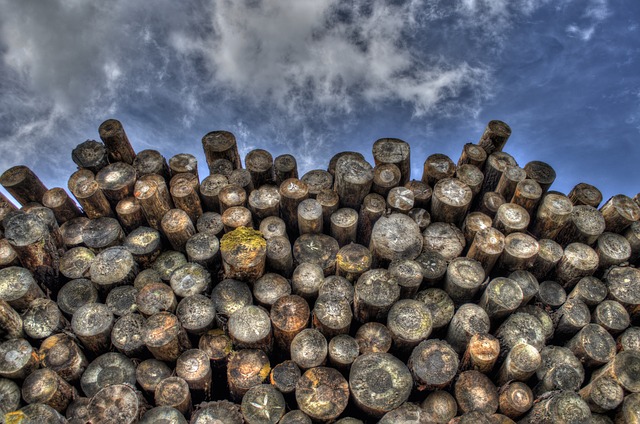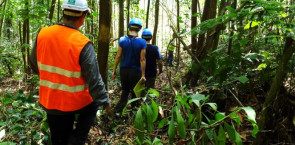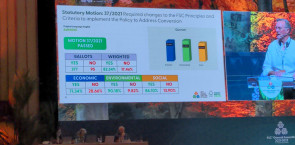
In Tuesday’s FSC General Assembly programme were two sessions focusing on controlled wood (CW), including – in the morning – a session on the CW Strategy. This was organised as a ‘fish bowl’ event in which six speakers gave their personal thoughts about the future of controlled wood; with their contributions structured around several questions posed by the facilitator.
The session provided a useful illustration of the variation in perspectives about controlled wood, including it potentially being phased out of the FSC system. Another focus was the anticipated path to the FSC workshop planned for June 2018 as well as finalisation of FSC’s controlled wood strategy.
One of the presenters, Jakob Ryding (Forests of the World/ Environmental Chamber) made the point that – if we want to phase out controlled wood – we need to focus on the underlying issues that limit uptake of FSC certification. He described some changes to historical issues associated with the FSC system that – once modified – would lead to less reliance on controlled wood. In this way, the vexed and ‘black and white’ question of whether controlled wood should be phased out becomes less divisive; and indeed less of a question.
For example, for the owners or managers of very small forest areas – who may harvest once or twice in their lifetimes – FSC is often neither relevant nor useful, with neither group nor SLIMF certification applying to them. While the current FSC system is not designed for smallholders, these forest growers still produce a significant portion of the local supply crucial to the FSC-certified industry.
Engaging such forest owners in FSC and certification would result in greater volumes of FSC-certified material entering the world’s supply chains; and the reduced significance of controlled wood.
A possible solution is an alternative smallholder standard – which, ironically, could incorporate elements of FSC controlled wood. Ideally this would shift a major portion of the responsibility from the small-scale grower to the next step in the supply chain (e.g. a sawmill or harvesting contractor); and consist of a slimmed-down version of the FSC Principles & Criteria focusing on core issues – in particular those relating to harvesting, High Conservation Values, health & safety, and land rights. Additional safeguards of such a new standard could be a risk-based approach and contractor certification; with the strategic use of remote sensing another useful adjunct to a remodelled approach. Such a standard, tailored to smallholders’ circumstances, would need to be sufficiently rigorous to satisfy FSC stakeholders.
Rather than asking, then, the difficult and divisive question as to whether controlled wood should be phased out, it would be more constructive to focus time, energy and the efforts of the FSC community towards resolving some historically difficult issues. And, potentially, recycling elements of the existing controlled wood framework to develop an elegant new standard that leads to production of acceptable material for FSC supply chains.
This article was originally published in the newsletter for the FSC General Assembly 2017.






